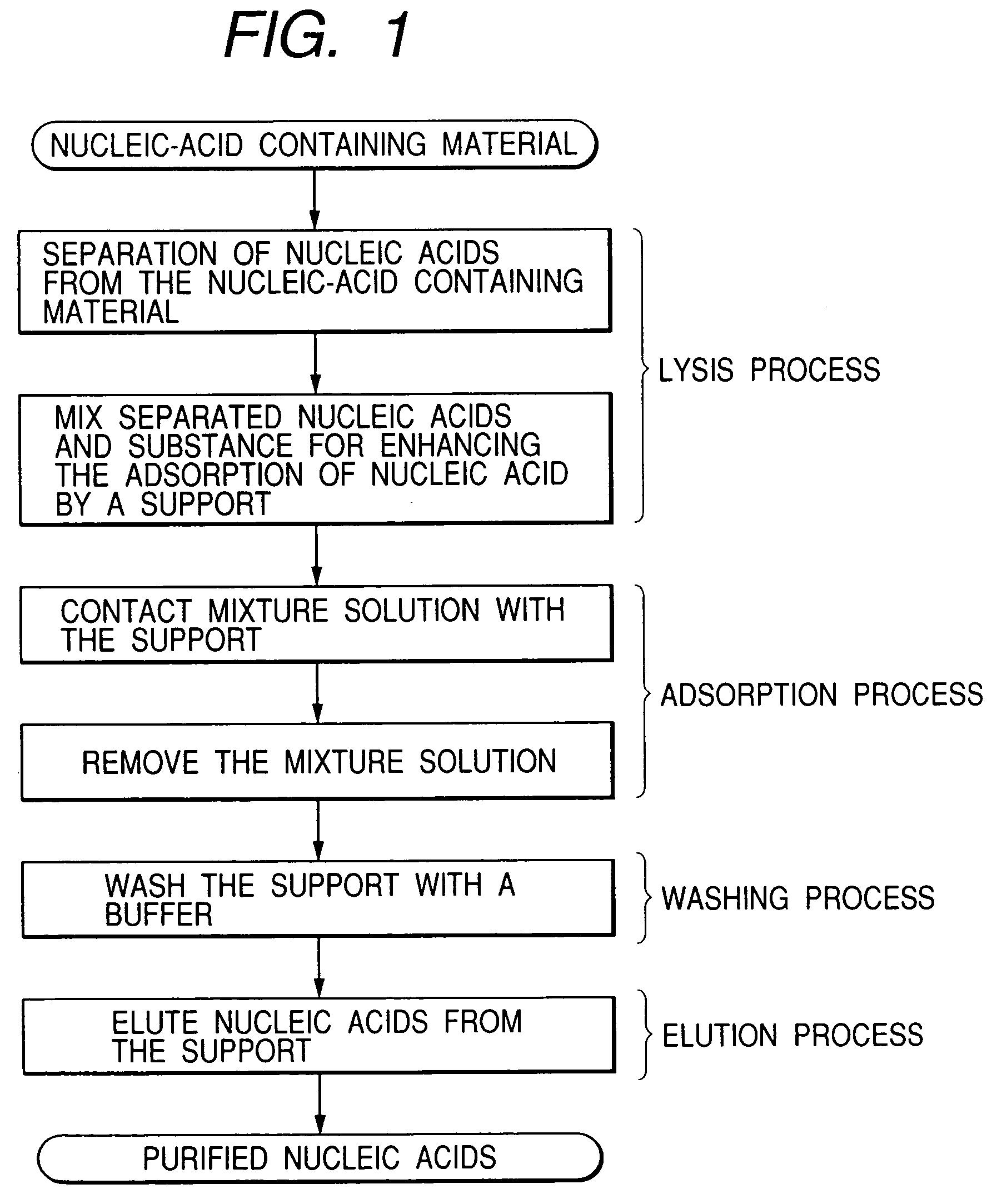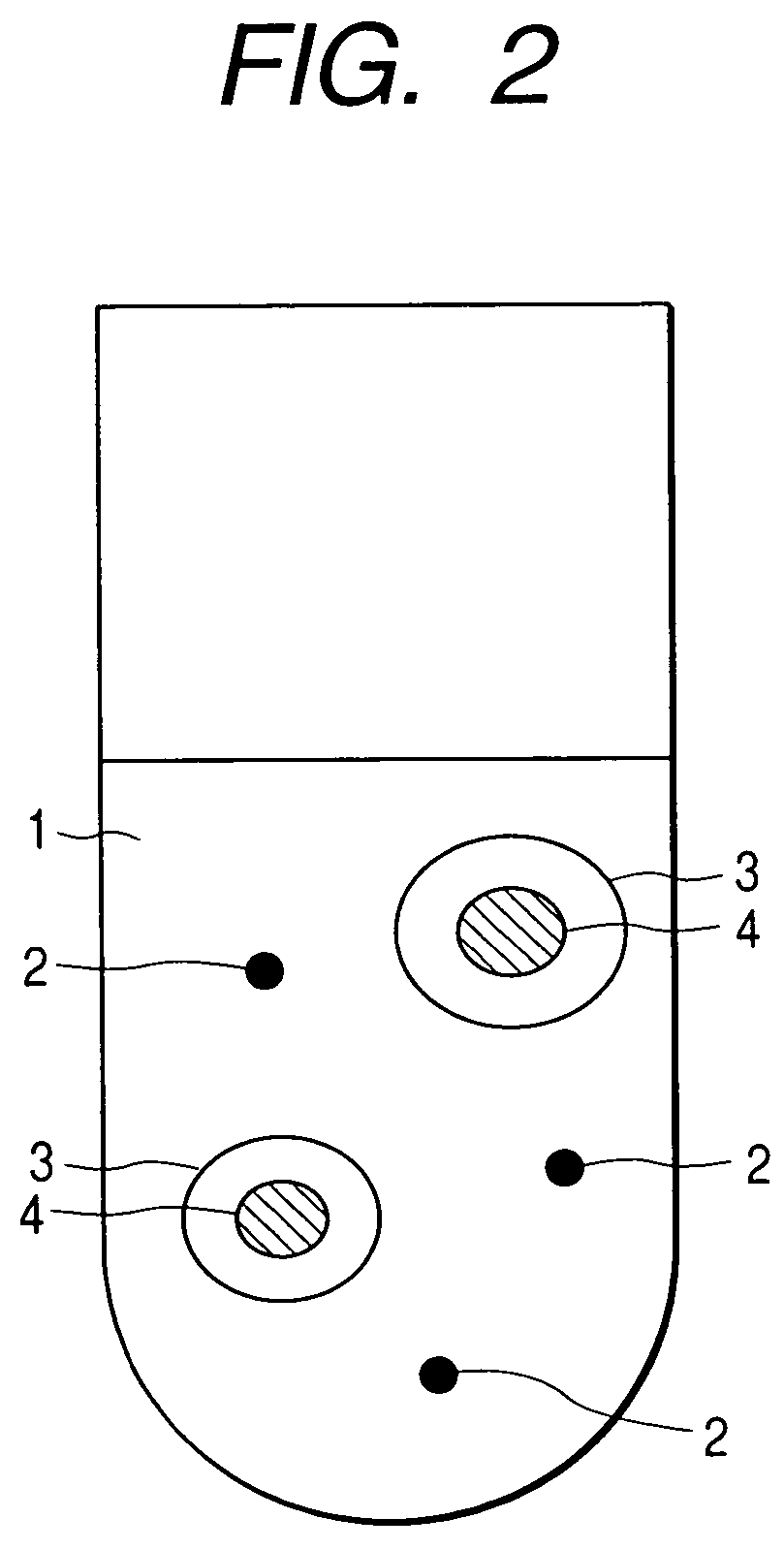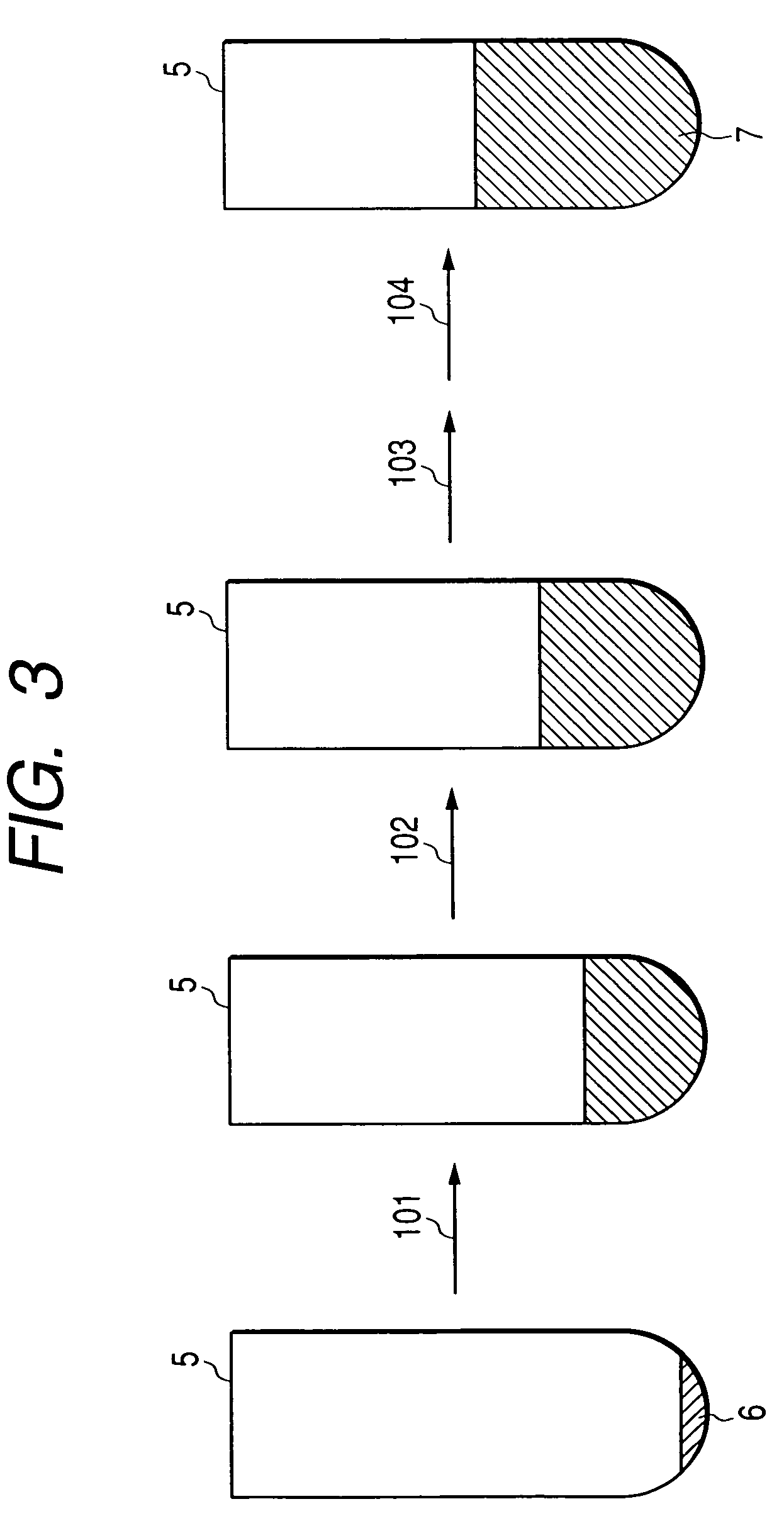Method for isolating and purifying nucleic acids
a nucleic acid and purification technology, applied in the field of isolating and purifying nucleic acids, can solve the problems of low yield of nucleic acid collection, complicated extraction process, and high labor intensity, and achieve excellent operability, reduce the time required for nucleic acid recovery, and improve the recovery yield
- Summary
- Abstract
- Description
- Claims
- Application Information
AI Technical Summary
Benefits of technology
Problems solved by technology
Method used
Image
Examples
example 1
Nucleic Acids Extraction from Whole Blood (the Second Method)
[0089]According to the second method illustrated in FIG. 3 and FIG. 5, nucleic acids are extracted from the human whole blood 1 (100 μL). In the lysis process, the whole blood 1 (100 μL) and a lysis buffer (100 μL) are added to a tube 5 containing proteinase K (6) (10 μL), followed by stirring into a mixed solution. The lysis buffer used here contains guanidine hydrochloride at a concentration of 3 M and Triton X-100 at 5% by volume. The mixed solution is incubated at 70° C. for 10 minutes. Thereafter, an additive solution (100 μL) selected from among EGDME, EGDEE, PGDME, PGDEE, DIGLYME, DGDEE, THF, DX, PGMEA, EL, HAC, AC, and MEK is added, and the resulted mixture is stirred.
[0090]In the adsorption process, the procedure for bi-directional transfer of the mixed solution by suction and discharge is repeated 10 times using a column 14 packed with an adsorption support 13 (product of Toshiba Ceramics Co., Ltd.).
[0091]In the ...
example 2
Nucleic Acids Extraction from Whole Blood (the Second Method)
[0108]Nucleic acids are extracted from human whole blood 1 (1 mL) according to the second method depicted in FIG. 3 and FIG. 5. In the lysis process, the whole blood 1 (1 mL) and a lysis buffer (1 mL) are added to a tube 5 containing proteinase K (6) (100 μL), followed by stirring into a mixed solution. The lysis buffer used here contained a concentration of 3 M of guanidine hydrochloride and Triton X-100 at 5% by volume. The mixed solution is incubated at 70° C. for 10 minutes. Thereafter, an additive solution (1 mL) selected from Diglyme and ethanol is added, and the mixture is stirred.
[0109]In the adsorption process, the procedure for bi-directional transfer of the mixed solution 7 is repeated 10 times using a column 14 packed with an adsorption support 13 (100 mg) (product of Tosoh Quartz Corp.).
[0110]In the washing process, the washing buffer 15 (W1) (3 mL) placed in another tube 16 undergoes the suction / discharge ope...
example 3
Nucleic Acids Extraction from Whole Blood (the First Method)
[0116]Nucleic acids are extracted from 100 μL of human whole blood according to the first method illustrated in FIG. 3 and FIG. 4.
[0117]The lysis process is carried out in the same manner as in Example 1. The same enzyme, lysis buffer, additive solution, washing buffer, and elution buffer as in Example 1 are used.
[0118]In the adsorption process, the mixed solution is poured into a spin column 8 and centrifuged (number of revolutions 6,000 rpm) for 1 minute using a desk centrifuge (number of revolutions 6,000 rpm).
[0119]In the washing process, a washing buffer (W2) 11 (500 μL) is poured into the spin column 8, and centrifugation is conducted for 1 minute (number of revolutions 6,000 rpm).
[0120]In the elution process, an elution buffer (E2) 12 (100 μL) is poured into the spin column 8. After standing for 2 minutes at room temperature (25° C.), the nucleic acids are collected by 1 minute of centrifugation (number of revolution...
PUM
| Property | Measurement | Unit |
|---|---|---|
| pH | aaaaa | aaaaa |
| diameter | aaaaa | aaaaa |
| wavelength | aaaaa | aaaaa |
Abstract
Description
Claims
Application Information
 Login to View More
Login to View More - R&D
- Intellectual Property
- Life Sciences
- Materials
- Tech Scout
- Unparalleled Data Quality
- Higher Quality Content
- 60% Fewer Hallucinations
Browse by: Latest US Patents, China's latest patents, Technical Efficacy Thesaurus, Application Domain, Technology Topic, Popular Technical Reports.
© 2025 PatSnap. All rights reserved.Legal|Privacy policy|Modern Slavery Act Transparency Statement|Sitemap|About US| Contact US: help@patsnap.com



